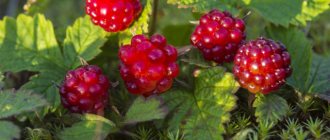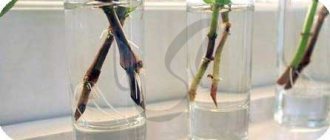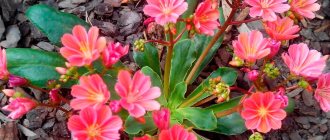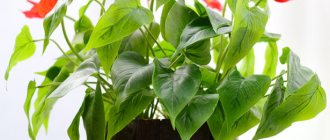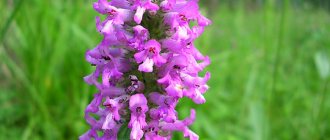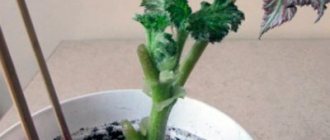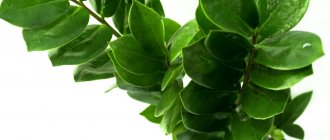Content
- 1. Description
- 2. Growing
- 3. Diseases and pests
- 4. Reproduction
- 5. First steps after purchase
- 6. Secrets of success
- 7. Possible difficulties
Albuca from the Asparagus family is a large genus, in which there are up to 150 different species.
The plant received its name due to its ability to sharply throw out a tall peduncle. The word "albicare" translates to "shoot white." The narrow and succulent leaves of Albuca differ among different species. They can be flat, resembling swords in shape, or they can be thin awl-shaped tubes and twist in a spiral. The length of the leaf blades also varies. In dwarf species it is only 8 cm, and in large ones it is more than a meter. A characteristic feature of Albuca leaves is the sticky juice protruding from them.
Some species smell pleasant, especially at night, emitting a pleasant vanilla aroma. Albuka's flowers are small and delicate. They are white, yellow, greenish, and with a purple tint. Sometimes they have a specific wide green or brown stripe located along the perianth. The corollas are bell-shaped in shape, with six petals.
Flowers can be collected in inflorescences located on high arrow-shaped peduncles, or be single - on short and thin stalks, lowered down. Albuka bears fruit with black, flattened seeds, the germination of which lasts no more than six months. It is quite possible to grow a plant from seeds, but it blooms only in the third year. It is more profitable to propagate succulents from baby bulbs. In this case, flowering can be observed already in May, and the curl of the leaf blades and the aroma of the flowers will be more intense.
Albuki's decorative leaves and flowers decorate the interior of any room in a picturesque and original way.
Main types and varieties, their photos
Spiral (Albuca spiralis)
This is an original plant with curled bluish-green leaves. Under natural conditions, they allow you to survive the dry period. The spiral-shaped leaves are 35 cm long.
In the first days of summer, a fleshy peduncle begins to appear from the bulb, on which 20 sunny yellow drooping flowers are located. They are very tender and fragrant. The peculiarity of the species is that the dormant period is in summer.
When growing crops, nutritious and loose soil with a drainage layer is required. Plants can grow singly or in small groups. Spiralis propagates by seeds and bulbs.
This variety is the most popular among gardeners. Suitable for indoor growing. The height of the crop is 75 cm. During flowering, white branches appear on the bush, and after they wither, a dark cherry longitudinal stripe appears. Nelson's albuca is propagated by seeds and bulbs, and is also cultivated as a container plant.
This is a perennial bulbous crop, the height of which is 30 cm. It is distinguished by the unusual structure of the flower: 3 outer petals are open, and 3 inner ones are curled towards the center of the wreath, covering the stamens.
Flowering occurs in late spring. Inflorescences are yellow-white. The leaf blade is rich green, 15 cm long. This species needs abundant watering (2-3 times a week). It is not demanding on humidity, it requires additional nutrients.
bract
The bulbs have a slightly green tint. They are covered with a thin wax film. The leaves are succulent and striped, their length is 1 m. They have healing properties, like aloe. In addition to South Africa, the variety is cultivated in the Mediterranean and Asia. Flowering lasts throughout the entire time.
A longitudinal green stripe is noticeable on the white petals. The brush is large, sometimes it can consist of 100 flowers, which open one by one. In terms of cultivation, this variety is no different from the others. It also reproduces by seeds and bulbs, rarely gets sick and blooms profusely.
Growing albuca in the garden
In climate zones with warm winters, albuca is cultivated in open ground. The bulbs are planted in the spring in a lighted area of the garden in light, loose soil, located at a distance of 5 cm from one another.
Flowering begins at the end of May and lasts about 10 weeks. Watering is only necessary in hot summer conditions; albuca usually has enough sedimentary moisture. The plant receives nutrients from the soil and does not need additional fertilizers.
With the beginning of autumn, the leaves dry out and the plants are dug up to be moved to a cool room for storage. In November they are planted in fresh soil.
Albuka spiral care at home
The life cycles of a succulent are significantly different from the houseplants we are used to, so it should be created to imitate its natural habitat. The growing season begins in autumn and lasts until spring, and the dormant period, on the contrary, begins in the summer months. It is in the summer that the plant fades and sheds its foliage. In order for a succulent to delight with the beauty of its spiral leaves, it needs bright lighting at least 18 hours a day. Such conditions are created using fluorescent or fluorescent lamps. The soil mixture for growing should be loose, light and have the same pH level as for growing other succulents when caring for them at home. Spiral albuca does not tolerate stagnation of water when watered, in which case the bulb rots.
For lovers of unusual and exotic albuca plants, the care and cultivation of which at home is not difficult, this is a real find and an excellent decoration for the room.
Problems when growing Albuka spiral flower
The Albuca spiralis flower is considered a fairly resistant crop to various diseases, but problems may still arise during cultivation.
Albuca diseases
Most often, flower growers are faced with rotting bulbs. This occurs when the soil is over-moistened. Saving such a crop is problematic, so it is better to prevent this from happening - regularly moisten the soil and prevent moisture stagnation.
When grown indoors, albuca sometimes suffers from fungal bulbous diseases:
- Root rot - during illness, the bulb becomes soft and rots;
- Gray rot (Botrytis) - the bulb and base of the leaves are covered with a grayish coating;
- Fusarium - during mechanical damage to the bulb, it begins to darken, then the plant completely rots.
The crop may also suffer from browning of the leaves. The reason for this is rust. Convex spots appear on the leaves, which begin to increase in size and lead to the leaves falling off. To combat this problem, it is better to use fungicides.
Sometimes spiral albuca does not curl its leaves. This happens due to stagnation of water. Provide it with enough light and adjust the watering. Additionally, factors such as the presence of through winds and sudden temperature changes should be removed.
Pests of succulent Albuca spiralis
Sometimes the bush can be damaged by pests. The most common is the spider mite. Fungicides are used to combat it.
Possible difficulties
Reason: 1) waterlogging of the soil.
The plant has grown tall and does not bloom
Reason: 1) lack of light.
Lots of leaves and no flowering
Reason: 1) excess nitrogen fertilizer.
Subscribe and receive descriptions of new species and varieties in the “bulb” section by email!
Albuka is an ornamental plant that is distinguished by its original appearance, which is why it attracts the attention of flower growers. The peculiarity of the plant is its curled leaves.
The snow-white inflorescences have stripes or green edges. In addition, albuca has about 150 species.
This plant is interesting not only to amateur gardeners, but also to children. This attractive plant with curled leaves is a great addition to any housewife's green corner.
Description and origin
Albuca is a perennial succulent plant, which is a representative of the bulbous plants. Its homeland is the southern regions of Africa, so the plant is heat-loving. The bulb is white in color, round in shape and slightly flattened. Its diameter is 5 cm. The leaves are collected near the base of the bulb into a rosette.
There are 15-20 of them on one plant. The length of the leaf does not exceed 30-35 cm. Albuka is dormant in winter, shedding its leaves. Only the bulbs remain in the soil. As soon as winter comes, their roots grow and a basal rosette appears, which consists of curled leaves. In the first stage, their linear forms protrude spirally.
With the onset of summer, the leaves curl up and look like serpentine. Thanks to this, the sheet plate retains moisture and reduces the possibility of evaporation.
Caring for albuca at home
The brighter the lighting, the more decorative the album will look. Its spiral leaves curl more strongly from the bright light. Flowering also requires a lot of light. Therefore, it must be located in a place with good, intense lighting. Considering that the growing season of albuca often occurs during a period with short daylight hours, artificial lighting is desirable.
Temperature
In summer, the air temperature for albuca is not particularly important. It is able to withstand relatively high temperatures of up to +30 degrees during this period. But in winter, this temperature should be moderate and even lower within +13-16 degrees. In order for spiral albuca to produce a peduncle and bloom, it requires a daily temperature difference starting in December.
Like all succulents, albuca does not like excess moisture, especially stagnation. Therefore, it must be watered abundantly, but only after the earthen clod has dried out. Excess moisture negatively affects the appearance of the plant. It has been noticed that with frequent heavy watering, albuca leaves curl weakly. With the onset of the dormant period, which is characterized by drooping leaves, watering is reduced until it stops completely.
Spiral albuca is fertilized only during the growing season. Mineral fertilizers for succulents are suitable for feeding it. They must be applied twice a month or according to the instructions for the fertilizer.
Albuca's dormant period
Basically, the development of albuca at home occurs in winter, and flowering occurs in mid-April. Spiral albuca blooms for about one and a half to two months, after which it gradually goes into a dormant state. Its leaves droop and often fall off completely. At this time, stop watering it and leave it to rest at room temperature in a shaded place. The end of the albuca's dormant period is considered to be the appearance of young leaves. From this moment, watering and fertilizing are resumed, and the plant is placed in a lighted place.
Spiral albuca transplantation
Before the end of the dormant period, which occurs in autumn, the albuca is transplanted into fresh soil and, if necessary, into a larger pot. For replanting, it is better to use a ready-made mixture for succulents with a high content of sand or perlite. When planting or replanting albuca, the plant bulb is buried no more than half its height.
Reproduction of albuca
Mostly at home, vegetative propagation of albuca by children is practiced. This is a more effective and simpler way. At the same time, it allows you to preserve all the species and varietal characteristics of the plant, which is not always possible when propagated by seeds.
Reproduction of albuca by children is carried out together with transplantation, in the fall. Young bulbs are carefully separated from the mother plant and planted in a pot of suitable size (usually 5-7 centimeters in diameter). Caring for young albuca at home is the same as caring for an adult plant.
Propagation of albuca by seeds is a somewhat more complex and less effective process. First of all, its low efficiency is characterized by low seed germination. And plants grown in this way can differ significantly in appearance and properties from the mother plant.
Only fresh albuca seeds are suitable for propagation. After six months they are practically unsuitable for planting. They are sown on the surface of a light earthen mixture and slightly buried into it. As when growing seedlings, the container with seeds is covered with any transparent material and placed in a bright, warm place. The optimal temperature for germination of albuca seeds is +25 – 28 degrees. Do not over-moisten the soil at all stages of growing albuca from seeds. Excess moisture can destroy it. Under favorable conditions, the first shoots can be expected within a couple of weeks. The leaves will begin to curl in a spiral in a few months, and after a year the bulb will form. Flowering of young spiral albuca grown from seeds can be expected three years after sowing the seeds.
Rest period and transplantation
Albuca blooms in April-May, the flowering period lasts about 10 weeks. After this, begin to reduce watering so that the leaves droop, stop feeding. It needs to be replanted at the end of autumn, after which minimal soil moisture is required (watering once a month is enough). During the dormant period, keep it cool, maintain daily temperature fluctuations, and light in partial shade or diffused. Starting in March, place it in a brighter place and resume watering.
For planting, take small pots, the diameter of which is 4-5 cm larger than the bulb itself. Place drainage at the bottom (pebbles, pebbles, expanded clay). The soil needs to be light, loose, permeable to air and water. Suitable substrate for succulents. If you prepare the soil mixture yourself, use turf, leaf soil and coarse sand in equal proportions.
Deepen the bulb to your own size, but this is not necessary: many people prefer to deepen it only a third or two-thirds in height in order to admire the beautiful juicy “turnip”. Just remember that then the baby bulbs will not take root, and they will have to be removed and rooted yourself.
Caring for spiral albuca at home
Illumination
This plant loves light very much. In order for it to grow intensively, develop normally and bloom profusely, you should choose the brightest window for its placement.
Temperature
This succulent also loves warmth. In summer, it should be kept at a temperature of 25 to 28 degrees, and in winter - from 13 to 15 degrees. In order for the albuca to bloom in spring in the last November and first December days, it should be placed in a cool place, so during the day it should be no more than 10–15 degrees, and at night - from 6 to 10 degrees.
How to water
During active growth and flowering, watering should be plentiful, but rather infrequent. So, you need to water only after the top layer of the substrate has dried thoroughly. Watering should be reduced after the albuca begins to prepare for the dormant period. At this time, its foliage begins to lie down. During the dormant period, watering is not carried out.
Top dressing
It is necessary to feed during intensive growth and flowering. To do this, use complex mineral fertilizer for succulents.
Features of transplantation
Transplantation is carried out in the autumn after the dormant period ends. Suitable soil should be light, well-permeable to water and air, well-drained and contain coarse sand. You can use commercial soil for succulents. Don't forget to make a good drainage layer at the bottom of the container.
Features of flowering and dormant period
This plant blooms in April-May and this period lasts approximately 2.5 months. After the plant has flowered, it needs to add fertilizer to the soil one last time and reduce watering. After the leaves have all withered, do not water the plant until late autumn. At this time, the container with the onion should be kept in a place with normal room temperature. In the last autumn weeks, you should replant into new soil, and then gradually return to the normal watering regime. The plant needs to be moved to a bright and cool place.
Reproduction methods
It can be propagated by baby bulbs and also by seeds.
Fresh seeds must be used for sowing. Sowing is done on the surface of purchased soil for succulent plants. Cover the container with glass or film, and germinate the seeds in a well-lit and warm place (26 to 28 degrees). The first seedlings will appear after about half a month. Watering must be done extremely carefully, avoiding overflow. At first, the leaves grow straight, but after a few months, in the presence of bright light, they begin to curl. By the end of the first year, the plant will have formed a small bulb. Such a plant will bloom for the first time only in the third year after sowing.
Baby bulbs must be carefully separated from the mother plant during transplantation. Then they should be planted in a separate container, the diameter of which should be 7–8 centimeters. With this method of propagation, the new plant will retain all the main characteristics of the mother plant (smell and curl of the leaves).
Reproduction methods
To propagate a flower, you should use a seed or bulb-shaped children.
Propagation by seeds
Albuca from seeds is a fairly commonly used type of propagation. To do this, you need to follow the following step-by-step instructions:
- At the first stage, special soil should be prepared.
- Plant seeds in it.
- Cover the top of the container with film or glass.
- Place the pot on a windowsill with good lighting. In this case, it is important to observe the temperature regime in the region of +26…+28 degrees.
- The greenhouse should be periodically moistened and ventilated.
- The first seedlings appear 14 days after planting.
The plant first produces straight leaves, after 3-5 months they curl. The first albuca flowers can be seen in the third year of the culture’s life.
Important! Do not allow stagnation in the soil, which can lead to rotting of the roots.
Albuca seeds
Reproduction by baby bulbs
Vegetative propagation by baby bulbs is carried out after they are separated from the mother bulb. They need to be replanted into another soil in the autumn. Each sprout should be planted in a separate small pot with a diameter of up to 8 cm. This propagation method allows the flower to retain valuable characteristics of the variety, such as the color of the flowers and their aroma, and the curl of the leaves.
Reproduction by baby bulbs
Diseases and pests
Albuka is a plant that has strong immunity, but in the absence of suitable conditions for growth and inadequate care, various problems can arise.
Bulb rotting
This problem is the most common. The main reason is waterlogging of the soil. It will no longer be possible to save such a plant, so you will have to get rid of it. But prevention involves adjusting watering, moistening the soil regularly, but avoiding the presence of standing water.
The leaves are turning brown
The most common cause of red-brown spots is rust, a fungal disease. These spots are slightly raised. Over time, they begin to grow and increase in size. The affected leaf plate begins to dry out, fall off, and the stems in the affected areas break.
If rust has infected a plant, it can be cured by removing all diseased leaves and also treating it with fungicides. Prevention involves normalizing watering and lighting.
Leaves don't curl
If the plant's leaves do not curl, then the reason is stagnation of water. In order for the albuca to delight with the beauty of its spiral-shaped leaves, it needs to be provided with bright lighting, which lasts at least 18 hours a day. For these purposes, it is necessary to use fluorescent or fluorescent lamps.
If the leaves of a flower begin to fall off, the following factors may affect this:
- moving the plant into the shade;
- strong temperature changes;
- draft with frosty wind;
- complete drying of the soil and abundant waterlogging.
Treatment for this problem depends on what caused it to develop. As soon as the unfavorable factor is eliminated, the plant will immediately begin to delight with its decorative appearance, and not with falling leaves.
Spider mite
If spider mite damage occurs, the leaves on the bush first curl and then fall off. In the absence of timely measures, the plant may die. To combat the parasite, the gardener needs to regularly inspect the flower. As soon as the pest is detected, treat the bush with fungicidal preparations.
Root mite
These parasites can live in any soil. They feed on organic debris and bacteria. The pest prefers to live on weakened and damaged bulbs. Root mites are not insects, so insecticides will not help. For treatment it is better to use insectoacaricidal agents.
Preparations based on organophosphorus compounds are effective. The following chemicals are used:
In order for the treatment to be effective and to avoid addiction, it is necessary to change the drugs used. As a preventive measure, treat planting material with a solution of colloidal sulfur.
Albuka is an ornamental crop that is valued not for its flowers, but for its elegant and original leaves. Despite the fact that the plant comes from the tropics, it is not at all picky in terms of cultivation.
Albuca is most often used for indoor cultivation. If you strictly follow all the recommendations, the crop will bloom profusely and delight you with its decorative appearance.
Albuca - if literally translated into the native language, it means “Shoot the Whites.” It received this name because of its white flowers on a long peduncle, as if shot from a ball of curly leaves. The flowering of albuca is certainly original, but it is the curly, spiral-curled leaves that are of great decorative value. Albuca belongs to the large Asparagus family. Her relatives can be found in the garden, in the collection of indoor plants, and even in the forest. This family is famous and representative. These are dracaena, aloe, asparagus, hosta, edible asparagus, yucca, nolina, poultry plant, lily of the valley, and this is not the whole list.
Leaves do not curl - what to do
The leaves of the plant are beautiful spirals. If such phenomena are not observed, the plant does not have enough light or moisture stagnates in the soil.
How to achieve twisting spirals
For the spirals to appear, you need to solve the lighting issue. The pot must be placed on a sunny windowsill. If this is not possible, the culture is illuminated with a phytolamp or other device.
If the reason is stagnant moisture or dry soil, the motivating factors are eliminated.
Important! Flower growers claim that the unusual shape of the foliage helps reduce the evaporation of liquid. This allows albuca to more easily tolerate high temperatures.
Albuka spirala unusual house plant
In another way, it is called the South African pearl in honor of the homeland of this exotic and amazing flower. This amazing variety of succulent, thanks to its unusual appearance, will decorate any home collection. The original shape of the leaves, which curl into a tight spiral, attracts and fascinates. It is this leaf shape that allows the plant not to overheat and retain moisture, and air masses to circulate freely around the succulent in the difficult natural conditions of the African climate. Spiral albuca grows in winter.
Albuca spiralis (not every flower shop sells such a plant) belongs to the representatives of the Asparagus family and is a perennial succulent plant. The bulb is slightly flattened, round in shape, whitish in color, up to 5 cm in diameter. The root system is fibrous, white. In albuca, the peduncle reaches a length of 60 cm and has a bluish tint. Flowers of 10–20 are collected in tassels. Each flower, 3 cm in diameter, is located on a peduncle and has a small pointed bract.
Growing and Reproduction
When to plant and can it be grown outside of home conditions?
Since Albuka is a heat-loving crop, it is better to grow it indoors.
But if the climate allows, then cultivation is allowed in open ground . In the southern regions, warmth and sunlight may be sufficient for the comfortable growth of this species.
For these purposes, choose a well-lit place, otherwise the plant will not grow and develop.
Planting activities should be carried out in the month of March, if you are planting bulbs. Seeds are planted at the end of February.
Reproduction methods
The seed propagation method for this plant is the most effective, as it allows you to obtain excellent and friendly crops. But that's where the benefits end. The fact is that only those grains that were collected recently (no more than 6 months) are suitable for planting. In addition, albuka will bloom only in the 3rd year after planting.
How to select and prepare seeds?
As soon as the plant fades and a box with seeds forms in place of the flower, they need to be collected and then placed in a dark place for 3-4 weeks. Only after this is the planting material ready for further use.
- Place the prepared substrate in a container with drainage holes. You can use a box or pot made of plastic or wood.
- Place the seeds on top of the soil without digging them into the ground.
- Spray them with water from a spray bottle.
- Cover the seedlings with film and keep them at a temperature of 28 degrees.
- As soon as 2 leaves are formed, carry out a pick, planting the plants in separate containers.
Bulbs
This method has several advantages:
- ease of operation;
- reliability, since the new plant will retain all the characteristics of its parent;
- young shoots are stronger and more resistant to disease.
The only downside is that it is difficult to keep the bulbs healthy unless certain conditions are met.
Unprotected bulbs are exposed to negative external influences. They can be affected by pests and fungi.
Dig up the planting material in the fall and then place it in a dark and cool place. Before planting, the bulbs produce young, straight leaves.
For planting you need to use light soil. The procedure is as follows:
- Lay a layer of drainage using expanded clay, and then fill the container with earth.
- Deepen the plant bulbs into the soil, maintaining an interval of 5 cm.
- The planting depth should not be more than 8 cm.
- You cannot bury them too deeply, since this is the vegetative part and it must retain moisture.
Reproduction of albuca
The seed method is not always effective - it is not known how long ago the seeds sold were collected. If albuca is already in the home collection and it is possible to obtain freshly harvested planting material, sowing gives better results, young shoots appear together. However, it should be remembered that the first delicate flowers will appear only in the third year.
For sowing, the containers are filled with a substrate for succulents, the seeds are practically not embedded in the soil, scattered over the surface of the soil mixture, then placed in a very bright place, covered with film or glass. Germinate at a temperature of 26-28 degrees above zero. Shoots appear after 2 weeks. Water them very carefully, avoiding overwatering. The bulb is formed during the first year of life.
A more common method of propagating albuca is by separated baby bulbs, which are formed in clusters from the mother plant. Daughter bulbs are planted in separate small-diameter pots, thus preserving all the varietal characteristics and aroma of the mother plant.
